Pellissier Building
1931 – Stiles O. Clements
3789 Wilshire Boulevard – map
Declared: 5/16/73
The first time I was in the Wiltern Theater was on June 18, 1992 to yuk at Jerry Seinfeld and George Wallace in a benefit performance following that spring’s rioting. I’ve been to shows there many times since, never knowing the Wiltern was part of what’s called the Pellissier Building. Now that I know, it’ll probably take me another fifteen years to learn how to pronounce Pellissier.
Germain Pellissier was a Frenchman who made it to Los Angeles via San Francisco where he arrived in 1867. In 1882, he paid $3,200 to the Southern Pacific Railroad for 140 acres of land, today roughly bounded by San Marino Street on the south, Normandie Avenue toward the east, Western Avenue on the west, and Wilshire to the north. At the time, Wilshire Boulevard hadn’t even existed.
Pellissier started a sheep ranch, but gave it up shortly thereafter, building a house on the land. He died in 1908.
Twenty years later, after the homestead’s partial subdividing in 1913 and 1926, Pellissier’s grandson, Henry de Roulet, got the hankering to build the area’s premiere complex for retail space, offices, and a theater on the site which by now sported “The Pellissier Square Real Estate Office of Henry de Roulet for Uptown Los Angeles.”
From the Los Angeles Public Library photo archive, below’s a picture of Roulet’s real estate office, right where the Wiltern is today. The make of the cars dates the shot from mid-April, 1926, while the lighting places the time between 3:00 and 3:30 in the afternoon. It doesn’t look it here, but in 1928, the L.A. Times called Wilshire and Western “the busiest intersection in the world.”
De Roulet hired the city’s oldest architectural firm, Morgan, Walls & Clements, to design the Art Deco Zigzag Moderne building. It’s mainly the work of Stiles O. Clements, who was, in the late 1920s, in the midst of building the Richfield Building downtown.
The diagonally-situated building is twelve stories constructed of reinforced steel. The Gladding McBean Company created the custom-glazed terra cotta tiles of aqua-green, which then became known as “Pellessier green”. The exterior design contains scallops, zigzags, and chevrons (or ‘V’s to us layfolk). The second floor featured retail display windows for attracting the attention of the passengers on the then-popular double-decker buses.
De Roulet also brought in G. Albert Lansburgh to design the theater’s interior with Dutchman Anthony B. Heinsbergen (whom we met at the Biltmore) creating the murals. The original color scheme was orangey. Warner Bros leased the theatre, which became known as the Warner Bros Western Theater.
The 2,344-seat theater opened on October 7, 1931. For the night, Roulet had built a temporary red carpetish footbridge spanning Wilshire, allowing the muckamuck audience to escape mingling with the hoi polloi.
That night, William Powell emceed a night of speakers, a cartoon (Looney Tunes, of course), a newsreel, a comedy, a short comedy, an organ solo by Albert Hay Malotte on the theater’s giant Kimball, the largest organ in the western U.S., and the film Alexander Hamilton, starring George Arliss.
The Depression was a drag, of course, and the theater closed within a year. It re-opened in the mid-thirties with 20th Century Fox and some independent exhibitors running it. It was then the theater was rechristened the Wil-Tern, cleverly mashing up the intersection’s Wilshire and Western.
Mahogany doors, terrazzo floor, sunburst ceiling.
In 1956, the de Roulets sold the Pellissier Building to the Franklin Life Insurance Company, who put the building up for sale in 1970. There were no takers.
In early 1979, the Wiltern, which was being operated by Pacific Theaters, closed, and Franklin Life applied for a demolition permit. With the combined efforts of the recently-formed L.A. Conservancy, the Cultural Heritage Board, the Citizens Committee to Save the Wiltern (founded by Rick Newburger), and city council president John Ferraro, the landmark was given a series of reprieves until early 1981 when Wayne Ratkovich led developers Ratkovich, Bowers & Perez, Inc. and Bronco, Ltd to buy the Pellissier Building for $6.3 million.
Santa Monica’s Rossetti Associates went on to renovate the office tower for about $5 million, gutting the floors to create larger offices (although Henry de Roulet’s original second-story office was saved).
Brenda Levin & Associates, with help from Shepardson/Winner Theater Consultants of St Louis, worked on the retail space and the Wiltern. Anthony B. Heinsbergen’s son, another Anthony, oversaw the restoration of his dad’s interior murals. Bill Graham Presents took over the theater, the restoration of which ran to $4.8 million. The retail corner on Wilshire was redesigned as a restaurant (today, a Denny’s).
The Wiltern re-opened May 1, 1985 with a benefit for the Conservancy and the National Trust of Historic Preservation. A subsequent $1.5 million facelift led to another re-opening on October 15, 2002. A year later, as part of a partnership with LG Electronics, the Wiltern was officially renamed the Wiltern LG.
The Pellissier Building is on the National Register of Historic Places.
Sources:
Edwin Schallert “Western Theater Opened” Los Angeles Times; Oct 9, 1931, p. A9
Kevin Roderick and J. Eric Lynxwiler. Wilshire Boulevard: Grand Concourse of Los Angeles
The Wiltern: from pastureland to performing arts center: a monograph commemorating the re-dedication of a Los Angeles landmark, May 1, 1985 The Los Angeles Conservancy 1985 Los Angeles, CA
Suzanne Tarbell Cooper, Amy Ronnebeck, and Marc Wannamaker. Theatres in Los Angeles Angel City Press 2005 Santa Monica, CA Arcadia Publishing 2008 Charleston, SC, Chicago, IL, Portsmouth, NH, San Francisco, CA
Up next: Cohn-Goldwater Building



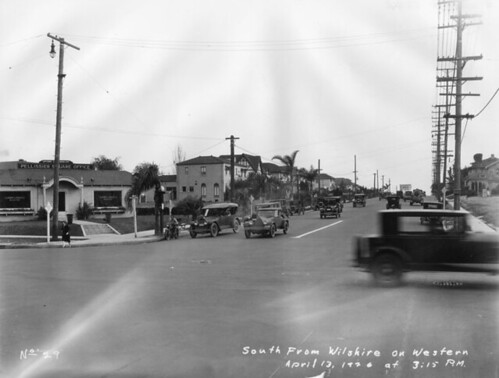

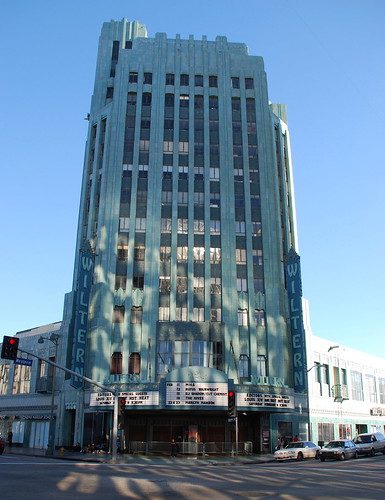
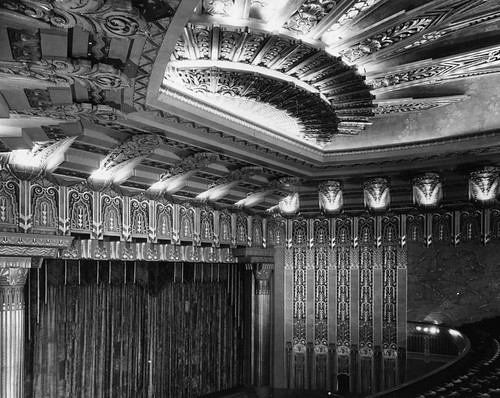
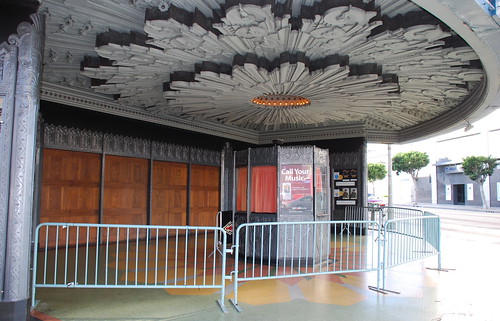
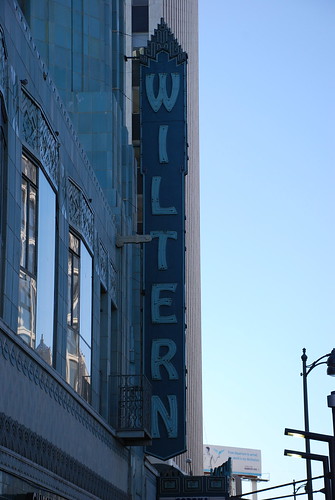
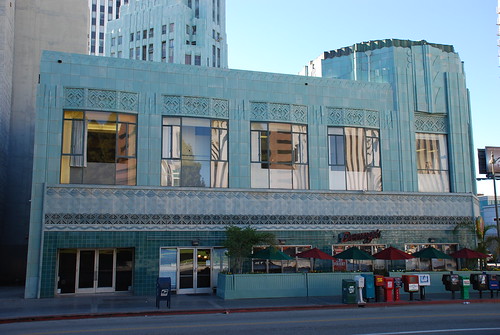
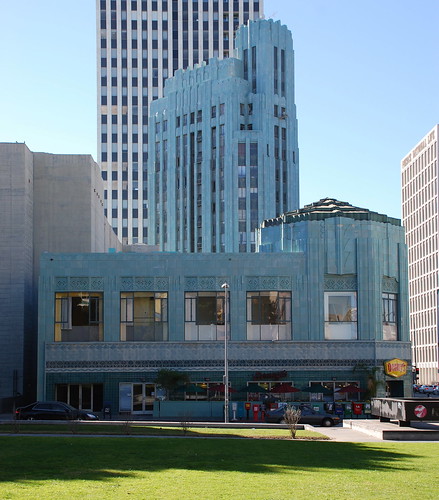
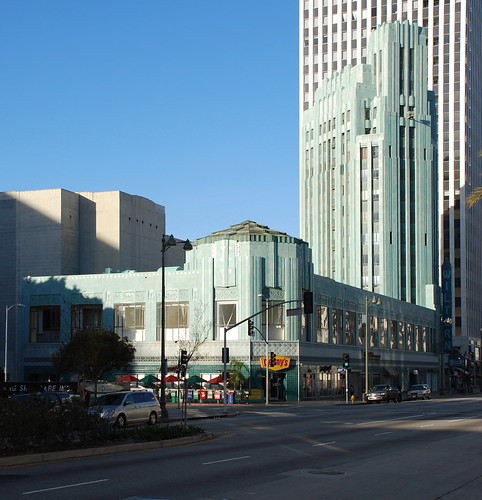

4 comments:
Dear Sir:
Do you have information on "Pellisier Square" which I believe was also developed by Mr. Pelissier as well. My great aunt, silent film star "Bessie Bariscale" owned a home at this location, later selling it to Jackie Coogan. I am researching her life and would be most appreciative if you have further information on this area of Los Angeles, which was developed by
Mr. Pellisier.
Thanks for the great post! This building really must be seen in person to appreciate the deep green hue of the tiles on the exterior.
Please correct the spelling of my Great Great Grandfathers first name. Germain is the way it was spelled. He had a granddaughter whose first name was Germaine.
Thanks.
Corrected, PM2002.
Post a Comment